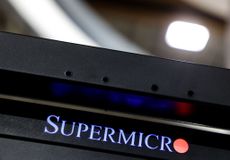The Surprising Success of a Dumb Investment
My roller-coaster ride with an unusual fund ends well after two decades. Here's what I learned from the investing odyssey.


When my lifelong best friend and his wife had a son in late 1994, I wanted to give their child something special, so I invested $1,000 in a fund called Twentieth Century Giftrust. You could only invest in this unique fund as a gift for someone other than your spouse in an irrevocable trust that lasted at least 10 years. (The minimum holding period was later raised to 18 years.)
I had just started as an investment writer at Kiplinger’s Personal Finance magazine, so naturally, my friend and his wife thought I knew what I was doing. It turned out I had more to learn. Given my faith in the long-term upward trend in stock prices and, at the time, the superior returns of stocks of small companies, the investment made sense to me. In hindsight, locking money up for so long in a narrow strategy was a costly mistake.
In the 1980s and early and mid 1990s, Twentieth Century, which later changed its name to American Century, was one of the hot fund firms. It specialized in small-company stocks with accelerating earnings and sales, many of them tech stocks. The firm’s momentum strategies, zeroing in on stocks outpacing the market, worked best with stocks of smaller companies. The funds were stellar performers, for me and many other investors.

Sign up for Kiplinger’s Free E-Newsletters
Profit and prosper with the best of expert advice on investing, taxes, retirement, personal finance and more - straight to your e-mail.
Profit and prosper with the best of expert advice - straight to your e-mail.
Moreover, the fund’s trust structure gave it an edge. Giftrust bought tiny stocks and didn’t face the dilemma of being forced to dump stocks at fire-sale prices to meet redemptions during unfriendly markets.
The fund was an incredible, if volatile, performer from its inception in late 1983 through November 1995. Over that span, the fund shellacked Standard & Poor’s 500-stock index by a phenomenal average of 7.5 percentage points annually. Kiplinger’s and other magazines sang its praises. But then it sank for three straight years, losing a cumulative 24%, even as the S&P 500 index gained 103%. If I’d had the choice, I probably would have sold during or after those losses. Three years of wretched underperformance? That’s not a good sign.
In 1999, the fund rebounded, soaring 87.3% as the tech bubble neared its apogee. During the 2000-02 tech bear market, as the S&P plunged 47.4%, Giftrust did far worse, plummeting 72.8%.
By then, my friends probably thought I was an investment moron, and who would I have been to argue? They had added $2,500 to their son’s Giftrust stake in December 2000, as tech stocks were collapsing. The entire investment was soon underwater.
As of December 31, 2003, Giftrust had assets totaling $905 million and some 300,000 investors, many of whom were likewise showing big losses. American Century was besieged with angry phone calls and letters from investors. Next came a handful of lawsuits from disgruntled investors who were able to get their money back—minus their losses and legal fees.
American Century tried almost everything to fix the mess Giftrust had become. From 1996 through 2003, the firm successively assigned four different management teams to turn the fund around, to no avail. Giftrust slowly morphed into a mid-cap growth fund and then into a mostly large-cap fund.
In 2005, the state legislature in Missouri, where American Century is located, enacted a law that makes it easier to escape from trusts such as Giftrust. Exiting Giftrust is now simply a matter of filling out a few forms.
Coincidentally or not, that’s when returns recovered from their long drought. From the start of 2005 through April 19 of this year, the fund gained an annualized 10.7%—an average of three percentage points per year better than the S&P. Over the past 15 years, the fund ranks in the top decile among large-company growth funds, although people who bought later on saw decidedly more mixed results.
The damage done in the late 1990s was too much for the fund to fully overcome. The $1,000 I invested returned an annualized 6.8% over the full 22 years it has been invested, trailing the S&P by an average of 2.5 percentage points annually. The $2,500 my friend added returned an annualized 5.6%, just barely trailing the S&P, by an average of 0.6-percentage point annually.
In 2011, American Century quietly renamed Giftrust American Century All-Cap Growth (TWGTX). It’s open to all investors, although those who want the long-term lockup of Giftrust can still get it in the fund by filling out some extra paperwork. Those trust investors now number 3,700, less than 15% than the fund counted 15 years ago. All-Cap Growth’s total assets, including the trust assets, are $1.1 billion.
What does my friend say? His son graduated from college last year without dipping into Giftrust, and the fund has continued to grow. Not accounting for taxes, the investment is now worth $10,540. Would he have done better in an S&P index fund? Of course. The investment would have grown to $13,410. Lots of actively managed funds did better, too. My friend, his wife and their son are happy with the nest egg their Giftrust has grown into. In fact, their son still owns the fund.
What are the lessons I take from all this? First and most important, the experience illustrates how much wealth you can build even if you don’t invest in just the right stock funds. Buying, holding and watching your money grow is really hard to do—witness the Giftrust lawsuits—but it usually pays off.
But I also learned that every investment strategy goes in and out of style. And so it was with Giftrust’s momentum strategy. What’s more, Giftrust was 20% more volatile than the S&P over the past 15 years. I’ve never known a fund that didn’t ultimately pay the price for such high volatility. In investing, slow and steady really does win the race.
Steve Goldberg is an investment adviser in the Washington, D.C., area.

-
 Super Micro Computer: Why This Hot Stock Could Hit $1,500
Super Micro Computer: Why This Hot Stock Could Hit $1,500Super Micro Computer's long-term AI revenue potential is underappreciated, Loop Capital says. Here's what you need to know.
By Joey Solitro Published
-
 Instant EV Tax Rebates Are a Hit: $580M Paid This Year
Instant EV Tax Rebates Are a Hit: $580M Paid This YearEV Credits Claiming federal electric vehicle tax credits at the point of sale is a new and popular option in 2024.
By Kelley R. Taylor Last updated
-
 ESG Gives Russia the Cold Shoulder, Too
ESG Gives Russia the Cold Shoulder, TooESG MSCI jumped on the Russia dogpile this week, reducing the country's ESG government rating to the lowest possible level.
By Ellen Kennedy Published
-
 Morningstar Fund Ratings Adopt a Stricter Curve
Morningstar Fund Ratings Adopt a Stricter Curveinvesting Morningstar is in the middle of revamping its fund analysts' methodology. Can they beat the indices?
By Steven Goldberg Published
-
 Market Timing: The Importance of Doing Nothing
Market Timing: The Importance of Doing NothingInvestor Psychology Investors, as a whole, actually earn less than the funds that they invest in. Here’s how to avoid that fate.
By Steven Goldberg Published
-
 Commission-Free Trades: A Bad Deal for Investors
Commission-Free Trades: A Bad Deal for Investorsinvesting Four of the biggest online brokers just cut their commissions to $0 per transaction. Be careful, or you could be a big loser.
By Steven Goldberg Published
-
 Vanguard Dividend Growth Reopens. Enter at Will.
Vanguard Dividend Growth Reopens. Enter at Will.investing Why you should consider investing in this terrific fund now.
By Steven Goldberg Published
-
 Health Care Stocks: Buy Them While They're Down
Health Care Stocks: Buy Them While They're Downinvesting Why this sector should outperform for years to come
By Steven Goldberg Published
-
 Buy Marijuana Stocks Now? You'd Have to Be Stoned.
Buy Marijuana Stocks Now? You'd Have to Be Stoned.stocks Don't let your investment dollars go to pot
By Steven Goldberg Published
-
 4 Valuable Lessons From the 10-Year Bull Market
4 Valuable Lessons From the 10-Year Bull MarketInvestor Psychology Anything can happen next, so you must be mentally prepared.
By Steven Goldberg Published